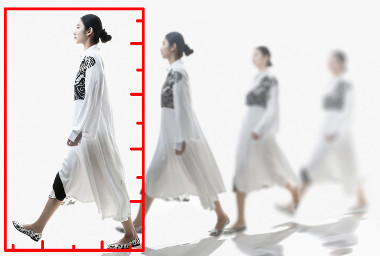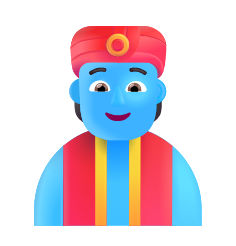I was watching The Punisher on Netflix last week and there was a scene (no spoilers, promise) in which someone was recognised from CCTV footage by the way they were walking. “Surely, that’s another example of Hollywood BS“, I thought to myself – “there’s no way that’s even remotely possible”. So, I spent the last week researching into this – and to my surprise it turns out that this is not a load of garbage after all! Gait Recognition is another legitimate form of biometric identification/verification.
In this post I’m going to present to you my past week’s research into gait recognition: what it is, what it typically entails, and what the current state-of-the-art is in this field. Let me just say that what scientists are able to do now in this respect surprised me immensely – I’m sure it’ll surprise you too!
Gait Recognition
In a nutshell, gait recognition aims to identify individuals by the way they walk. It turns out that our walking movements are quite unique, a little like our fingerprints and irises. Who knew, right!? Hence, there has been a lot of research in this field in the past two decades.
There are significant advantages of this form of identity verification. These include the fact that it can be performed from a distance (e.g. using CCTV footage), it is non-invasive (i.e. the person may not even know that he is being analysed), and it does not necessarily require high-resolution images for it to obtain good results.
The Framework for Automatic Gait Recognition
Trawling through the literature on the subject, I found that scientists have used various ways to capture people’s movements for analysis, e.g. using 3D depth sensors or even using pressure sensors on the floor. I want to focus on the use case shown in The Punisher where recognition was performed from a single, stationary security camera. I want to do this simply because CCTV footage is so ubiquitous today and because pure and neat Computer Vision techniques can be used on such footage.
In this context, gait recognition algorithms are typically composed of three steps:
- Pre-processing to extract silhouettes
- Feature extraction
- Classification
Let’s take a look at these steps individually.
1. Silhouette extraction
Silhouette extraction of subjects is generally performed by subtracting the background image from each frame. Once the background is subtracted, you’re left with foreground objects. The pixels associated with these objects can be coloured white and then extracted.
Background subtraction is a heavily studied field and is by no means a solved problem in Computer Vision. OpenCV provides a few interesting implementations of background subtraction. For example, a background can be learned over time (i.e. you don’t have to manually provide it). Some implementations also allow for things like illumination changes (especially useful for outdoor scenes) and some can also deal with shadows. Which technique is used to subtract the background from frames is irrelevant as long as reasonable accuracy is obtained.
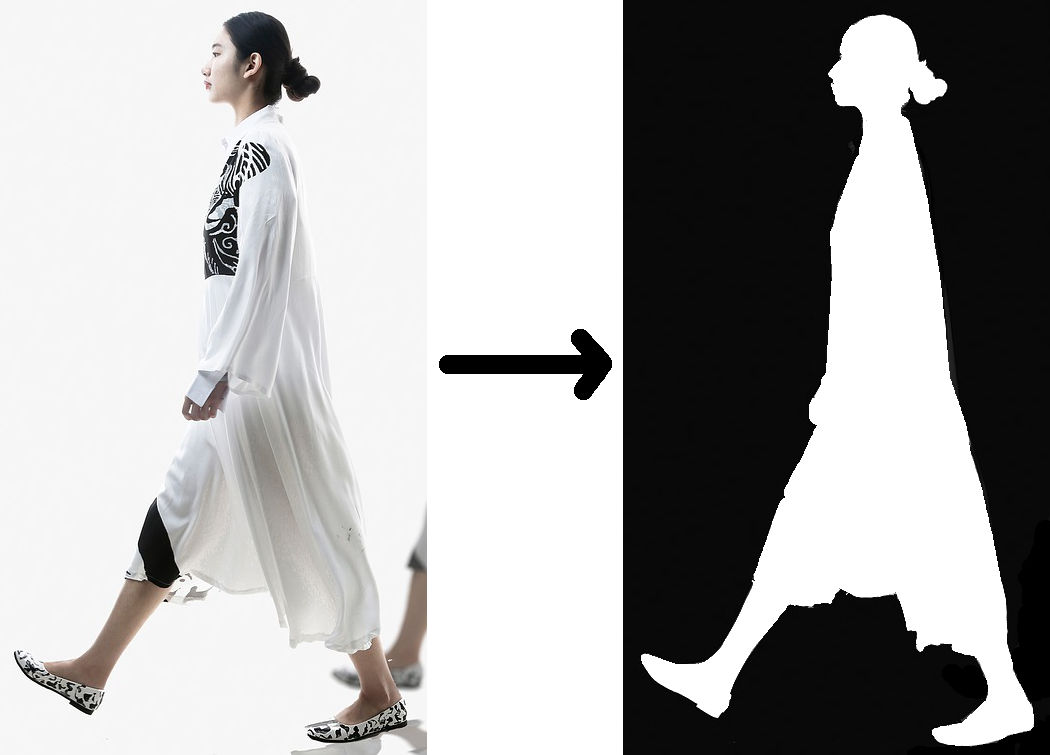
2. Feature extraction
Various features can be extracted once we have the silhouettes of our subjects. Typically, a single gait period (a gait cycle) is first detected, which is the sequence of video showing you take one step with each of your feet. This is useful to do because your gait pattern repeats itself, so there’s no need to analyse anything more than one cycle.
Features from this gait cycle are then extracted. In this respect, algorithms can be divided into two groups: model-based and model-free.
Model-based methods of gait recognition take your gait period and attempt to build a model of your movements. These models, for example, can be constructed by representing the person as a stick-figure skeleton with joints or as being composed of cylinders. Then, numerous parameters are calculated to describe the model. For example, the method proposed in this publication from 2001 calculates distance between the head and feet, the head and pelvis, the feet and pelvis, and the step length of a subject to describe a simple model. Another model is depicted in the image below:
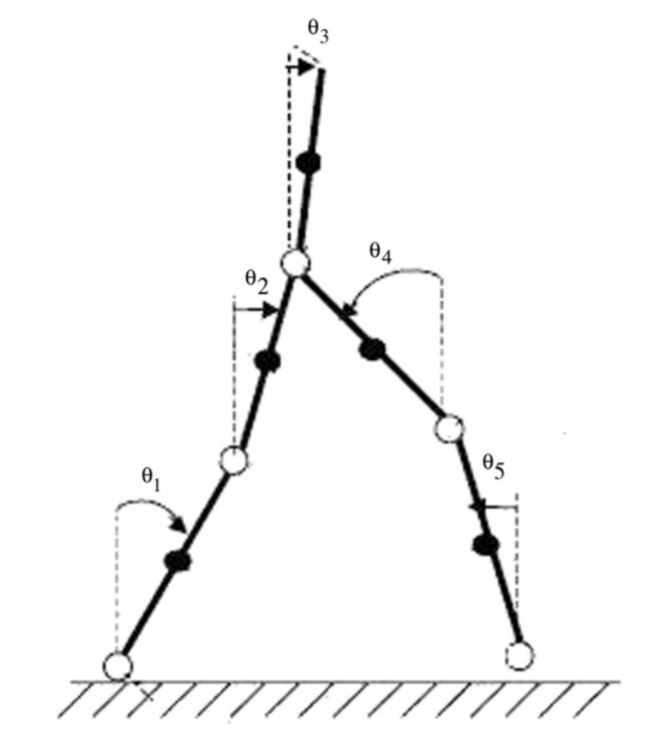
Model-free methods work on extracted features directly. Here, undoubtedly the most interesting and most widely used feature extracted from silhouettes is that of the Gait Energy Image (GEI). It was first proposed in 2006 in a paper entitled “Individual Recognition Using Gait Energy Image” (IEEE transactions on pattern analysis and machine intelligence 28, no. 2 (2006): 316-322).
Note: the Pattern Analysis and Machine Intelligence (PAMI) journal is one of the best in the world in the field. Publishing there is a feat worthy of praise.
The GEI is used in almost all of the top gait recognition algorithms because it is (perhaps surprisingly) intuitive, not too prone to noise, and simple to grasp and implement. To calculate it, frames from one gait cycle are superimposed on top of each other to give an “average” image of your gait. This calculation is depicted in the image below where the GEI for two people is shown in the last column.
The GEI can be regarded as a unique signature of your gait. And although it was first proposed way back in 2006, it is still widely used in state-of-the-art solutions today.
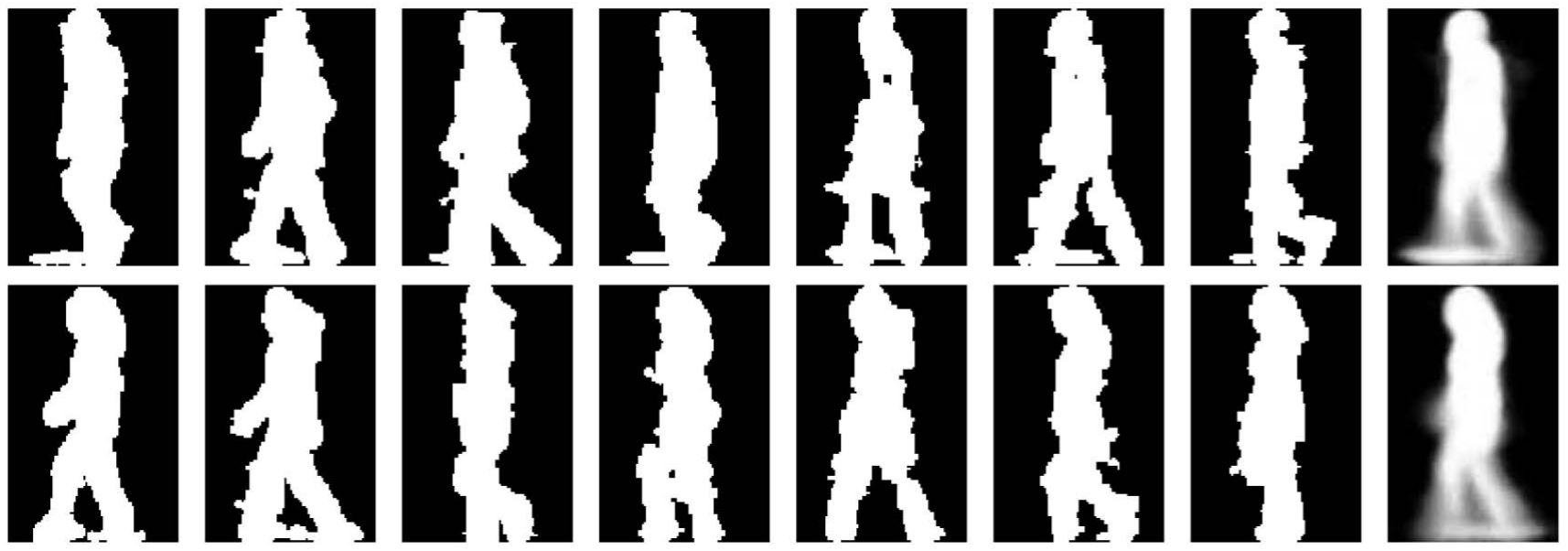
3. Classification
Once step 2 is complete, identification of subjects can take place. Standard classification techniques can be used here, such as k-nearest neighbour (KNN) and the support vector machine (SVM). These are common techniques that are used when one is dealing with features. They are not constrained to the use case of computer vision. Indeed, any other field that uses features to describe their data will also utilise these techniques to classify/identify their data. Hence, I will not dwell on this step any longer. I will, however, will refer you to a state-of-the-art review of gait recognition from 2010 that lists some more of these common classification techniques.
So, how good is gait recognition then?
We’ve briefly taken a look at how gait recognition algorithms work. Let’s now take a peek at how good they are at recognising people.
We’ll first turn to some recent news. Only 2 months ago (October, 2017) Chinese researchers announced that they have developed the best gait recognition algorithm to date. They claim that their system works with the subject being up to 50 metres away and that detection times have been reduced to just 200 milliseconds. If you read the article, you will notice that no data/results are presented so we can’t really investigate their claims. We have to turn to academia for hard evidence of what we’re seeking.
“Gaitgan: invariant gait feature extraction using generative adversarial networks” (Yu et al., IEEE Conference on Computer Vision and Pattern Recognition Workshops, pp. 30-37. 2017) is the latest top publication on this topic. I won’t go through their proposed algorithm (it is model-based and uses the GEI), I will just present their results – which are in fact quite impressive.
To test their algorithm, the authors used the CASIA-B dataset. This is one of the largest publicly available datasets for gait recognition. It contains video footage of 124 subjects walking across a room captured at various angles ranging from front on, side view, and top down. Not only this, but walking is repeated by the same people while wearing a coat and then while wearing a backpack, which adds additional elements of difficulty to gait recognition. And the low resolution of the videos (320×240 – a decent resolution in 2005 when the dataset was released) makes them ideal to test gait recognition algorithms on considering how CCTV footage has generally low quality also.
Three example screenshots from the dataset is shown below. The frames are of the same person with a side-on view. The second and third image shows the subject wearing a coat and a bag, respectively.

Recognition rates with front-on views with no bag or coat linger around 20%-40% (depending on the height of the camera). Rates then gradually increase as the angle nears the side-on view (that gives a clear silhouette). At the side-on view with no bag or coat, recognition rates reach an astounding 98.75%! Impressive and surprising.
When it comes to analysing the clips with the people carrying a bag and wearing a coat, results are summarised in one small table that shows only a few indicative averages. Here, recognition rates obviously drop but the top rates (obtained with side-on views) persist at around the 60% mark.
What can be deduced from these results is that if the camera distance and angle and other parameters are ideal (e.g. the subject is not wearing/carrying anything concealing), gait recognition works amazingly well for a reasonably sized subset of people. But once ideal conditions start to change, accuracy gradually decreases to (probably) inadequate levels.
And I will also mention (perhaps something you may have already garnered) that these algorithms also only work if the subject is acting normally. That is, the algorithms work if the subject is not changing the way he usually walks, for example by walking faster (maybe as a result of stress) or by consciously trying to forestall gait recognition algorithms (like we saw in The Punisher!).
However, an accuracy rate of 98.75% with side-on views shows great potential for this form of identification and because of this, I am certain that more and more research will be devoted to this field. In this respect, I will keep you posted if I find anything new and interesting on this topic in the future!
Summary
Gait recognition is another form of biometric identification – a little like iris scanning and fingerprints. Interesting computer vision techniques are utilised on single-camera footage to obtain sometimes 99% recognition results. These results depend on such things as camera angles and whether subjects are wearing concealing clothes or not. But much like other recognition techniques (e.g. face recognition), this is undoubtedly a field that will be further researched and improved in the future. Watch this space.
To be informed when new content like this is posted, subscribe to the mailing list (or subscribe to my YouTube channel!):
